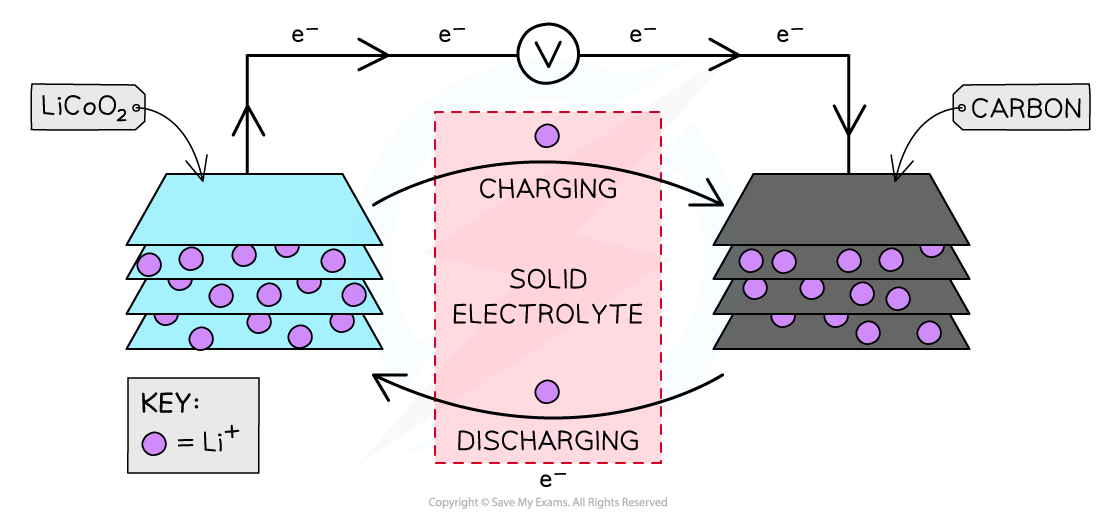- 翰林提供学术活动、国际课程、科研项目一站式留学背景提升服务!
- 400 888 0080
AQA A Level Chemistry复习笔记5.4.5 Lithium Cells
Lithium Cells
- Lithium ion cells power the laptop or mobile device you are probably reading this on
- The Noble Prize for Chemistry in 2019 was awarded to John B. Goodenough, M. Stanley Whittingham and Akira Yoshino for their work on lithium ion cells that have revolutionised portable electronics
- Lithium is used because it has a very low density and relatively high electrode potential
- The cell consists of:
- a positive lithium cobalt oxide electrode
- a negative carbon electrode
- a porous polymer membrane electrolyte
- The polymer electrolyte cannot leak since it is not a liquid or paste, which presents advantages over other types of cells

Lithium ion cell
- The cell consists of a sandwich of different layers of lithium cobalt oxide and carbon
- When the cell is charged and discharged the lithium ions flow between the negative and the positive through the solid electrolyte
- The half-cell reactions on discharge are:
Li (s) → Li+ (s) + e– Eꝋ = -3 V
Li+ (s) + CoO2 (s) + e– → Li + (CoO2) – (s) Eꝋ = +1 V
- The cell generates an emf of between 3.5 V and 4.0 V and the overall reaction is
Li (s) + CoO2 (s) → Li + (CoO2) – (s) Eꝋcell ~ +3.5
- NiCad cells have a problem called the memory effect in which they gradually begin to lose their charge after repeated charge cycles when the cell is not fully discharged. The cells appear to 'remember' their lower state of charge
- Lithium-ion cells do not have this problem so can be topped up without any loss of charge
- Some of the problems with lithium ion cells:
- A global shortage of lithium is likely to make lithium ion cells unsustainable as the current demand for lithium exceeds the supply
- If cells are not recycled but thrown away in landfills, then a huge amount of lithium becomes lost to future generations
- Reports of lithium ion cell fires have raised concern about the safety of these batteries in electronic devices; it is a reminder to us that lithium is a very reactive element in Group 1 of the periodic table, which is why it has a high electrode potential
转载自savemyexams

早鸟钜惠!翰林2025暑期班课上线

最新发布
© 2025. All Rights Reserved. 沪ICP备2023009024号-1








